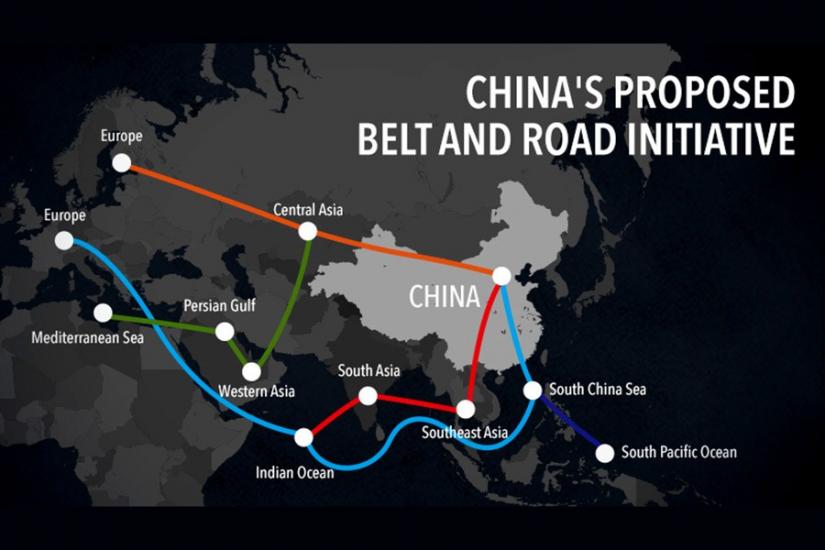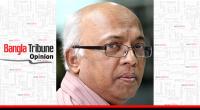 Since announcing its Belt and Road Initiative five and half years ago, China has spent billions of dollars in Asia, Africa and Europe supporting a variety of infrastructure projects and stoking concerns about Beijing’s growing global swing. China now appears to be putting the brakes on lavish BRI-related spending and it could be a sign of worries about the scale of its commitments.
Since announcing its Belt and Road Initiative five and half years ago, China has spent billions of dollars in Asia, Africa and Europe supporting a variety of infrastructure projects and stoking concerns about Beijing’s growing global swing. China now appears to be putting the brakes on lavish BRI-related spending and it could be a sign of worries about the scale of its commitments.
The issue is not that the initiative has run into a trouble in several places, including Malaysia and Pakistan. On July, 2018 Malaysia said- It had suspended three major China-backed projects worth of $22 billion dollars. The big-ticket items were axed by the new, democratically elected Malaysian government led by Mahathir Mohammad which the projects were approved by ousted Prime Minister Najib Razak earlier. Added to this, the International Crisis Group reported widespread discontent with the China-Pakistan Economic Corridor among the local people over issues like inadequate employment and the over-bearing presence of military and civilian life along the 2700 kilometer corridor.
As it stands, clearly the OBOR is running into trouble. Prime Minister Mahathir Mohammad is somebody who can put things across very succinctly. He has said that the BRI projects are by China, for China, of China. This is a China conceived initiative where the projects are planned and executed by China. Chinese technologies are brought in. There’s no competitive bidding and there’s no way to determine actual cost. Loans are given at high interest rates which in some cases are as high as 6%. And, there’re now the countries which had approved the projects because they need infrastructure. Let’s talk about Malaysia for a moment. Malaysia found the projects were under-valued and the actual price costs for the projects are almost twice as projected. Now, $20-$22 billion dollars projects could be shown to cost $14-15 billion dollars actually, but run at an interest rate of 6%. It’s quite obvious that one is buying almost lemon for the infrastructure projects. The contrast is clear if one looks at what the World Bank or IDB does or some of the other country like Japan does. Japan for example gives loans at 0.1% interest and with a holiday period for repayment. Whereas World Bank gives loans either interest free or AT nominal interest. Frankly, the way it is conceived, it’s unviable. Some would argue that it is a debt trap or strategic trap or security trap that countries are getting into.
There’s a growing realization about this in many countries particularly in Malaysia. That the country could be going down the debt path that would have resulted in a very heavy kind of burden as far as the next generation is concerned is understood very well. We have to bear in mind that the Malaysian experience was a repeat of what had hapened in Sri Lanka where again we had a similar kind of pattern of a change in government. Where former President Rajapaksha had entered into long term negotiations and deals with China that resulted Sri Lanka going down similar path. And, the fact that Hambantota port had to be now in a way mortgaged, if one looks at the kind of terms that is now agreed upon. Speaking outright, Prime Minister Mahathir’ decision was largely influenced by the Sri Lankan experience. Belt and Road Initiative has five elements as mentioned in the white paper in March 2015.
Belt and Road Initiative has five elements as mentioned in the white paper in March 2015.
1. Policy coordination; 2. Connectivity issues, 3. Trade promotion; 4.The use of Renminbi or finanacial integration; 5. People to People contact
In these five areas in the last five and half years, China has made some inroads. Policy coordination with a Summit level meeting in May 2017 in Beijing. Yet, there’re issues that needs to be addressed in policy coordination in relation to other countries. For example, the India-China joint statement so far does not mention about the BRI projects at all. None of the joint statement mention about it including U.S., Japan and other countries. So, that’s where the policy coordination also has to happen. Of course, China’s doing a lot for example the EU 16+1 is one where they have mobilized the Central European countries/East European Countries in that format of connectivity etc. In terms of trade promotion, the recent tariff increases by the Trump administration is having an impact on business sentiments or business environment in a broader sense. Actually, the Chinese government itself is saying that growth rate will fall from 6.92% to roughly about 5% in last year which means shrinking as such global trade is shrinking. Analysts feel this poses a fresh challenge for the BRI projects.
Is CPEC running into trouble?
The CPEC is now becoming an issue in Pakistan. For example, the new Prime Minister Imran Khan had suggested for re-studying of many of these projects because of environmental concerns, debt issues and other problems. For example, IN November 2017 they cancelled the Diamer-Bhasha dam project which is almost $12 billion. That’s a pretty huge. Then, there’s Qinghew company from China which has cancelled about $16 billion project in Baluchistan because of the insurgency in that province. So, many of the projects are now getting into trouble.
Asia-Africa Growth Corridor: An alternative in the offing?
Indonesia had a high speed railway contract with the Chinese beating the Japanese. Today, Indonesia is pushing THE Asia-Africa growth corridor. Last year, the African Development Bank Summit meeting in Gujarat proposed the Asia-Africa Growth Corridor which is slightly a different model compared to the Belt and Road Initiative.
On the other hand, Asia-Africa Growth Corridor has a consultative mechanism with the countries concerned. Secondly, they’re talking about the quality infrastructure because of the quality of bri projects is open to doubt in many places.
Thirdly, they also mention about productive assets with the concerned countries involving the civil society, NGOs etc ------that’s missing in the BRI projects.
It appears to be a top-down kind of approach in the BRI. So, there’s the model application in these countries is becoming problematic.
The bottom line? The Chinese Communist Party had mentioned this BRI as a program in the party Constitution. The 19th Communist party Congress last October had also flagged this issue on the BRI construction. So, definitely THERE IS a huge personality imprint of Xi Xinping on the Belt and Road Initiative. To that extent, there’s an involvement of the whole country towards the BRI projects. Some twenty odd provinces have joined the BRI projects especially the North-Western regions Sichuan, Gansu, Ningxia and so on. There’s a definitive stance behind by the Party, Government and State on the Belt and Road Initiative.
It is quite possible for them to apply mid-course correction on the debt-related issues, environmental protection issues. But, there’re some countries which are desperate for the BRI projects especially in Central Asia. Many of the Central Asian Republics can’t export energy because the energy sector is controlled by Russia. So, there’s a huge interests that the Central Asian Republics have. In South Asia, many countries are also desperate. This is where if the Asia-Africa Growth Corridor picks up as the 10th April meeting between U.S., Japan and India and Indonesia for financing infrastructure projects. If that takes off, then there’s a concrete alternative proposal to the BRI.
Md Sharif Hasan teaches International Relations at the University of Rajshahi.
 Opinion
Opinion
30668 hour(s) 9 minute(s) ago ;
Afternoon 03:03 ; Tuesday ; Apr 16, 2024
China’s OBOR Blues
Send
Md Sharif Hasan
Published : 21:07, May 07, 2019 | Updated : 21:21, May 07, 2019
Published : 21:07, May 07, 2019 | Updated : 21:21, May 07, 2019
0 ...0 ...
/aib/hb/
Topics: Top Stories
***The opinions, beliefs and viewpoints expressed in this article are those of the author and do not reflect the opinions and views of Bangla Tribune.
- KOICA donates medical supplies to BSMMU
- 5 more flights to take back British nationals to London
- Covid19: Rajarbagh, Mohammadpur worst affected
- Momen joins UN solidarity song over COVID-19 combat
- Covid-19: OIC to hold special meeting
- WFP begins food distribution in Cox’s Bazar
- WFP begins food distribution in Cox’s Bazar
- 290 return home to Australia
- Third charter flight for US citizens to return home
- Dhaka proposes to postpone D8 Summit
Unauthorized use of news, image, information, etc published by Bangla Tribune is punishable by copyright law. Appropriate legal steps will be taken by the management against any person or body that infringes those laws.
Bangla Tribune is one of the most revered online newspapers in Bangladesh, due to its reputation of neutral coverage and incisive analysis.
F R Tower, 8/C Panthapath, Shukrabad, Dhaka-1207 | Phone: 58151324; 58151326, Fax: 58151329 | Mob: 01730794527, 01730794528


